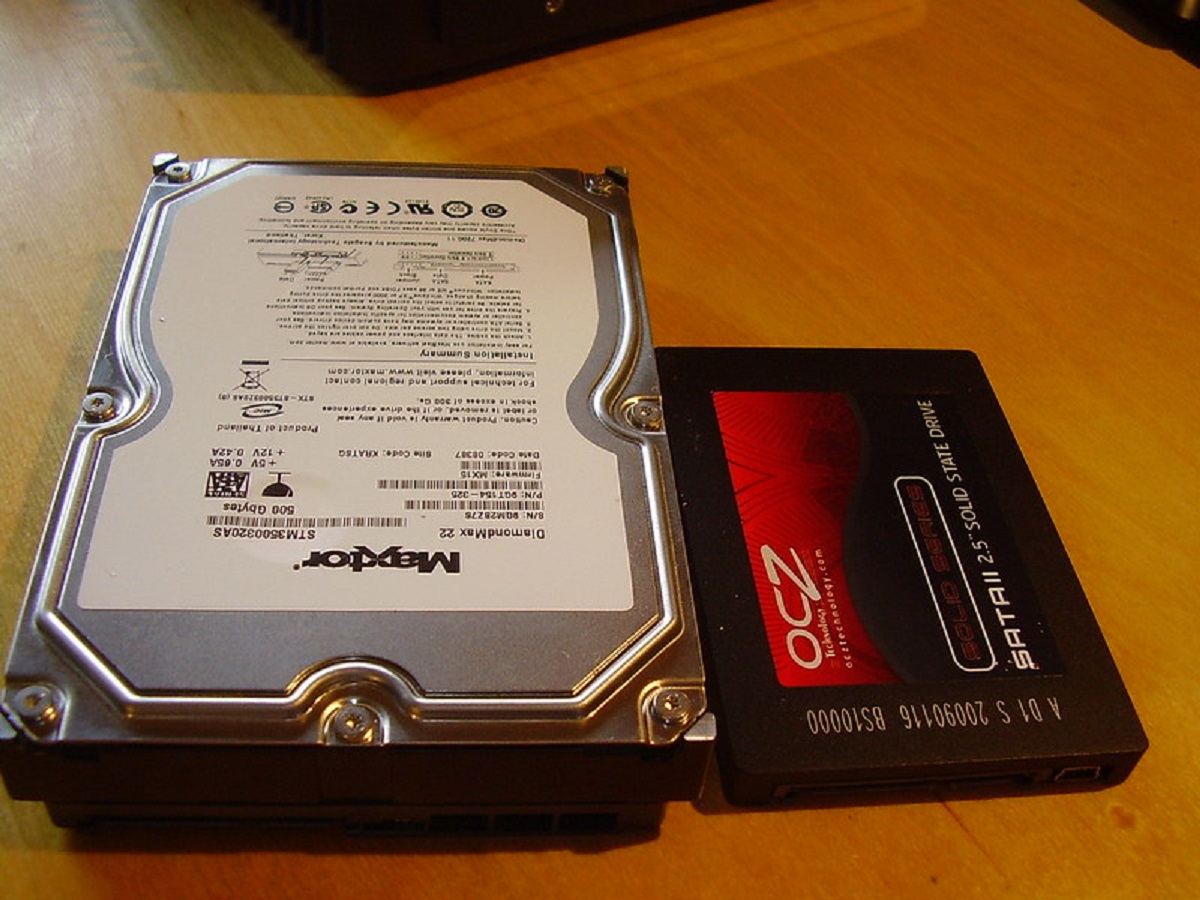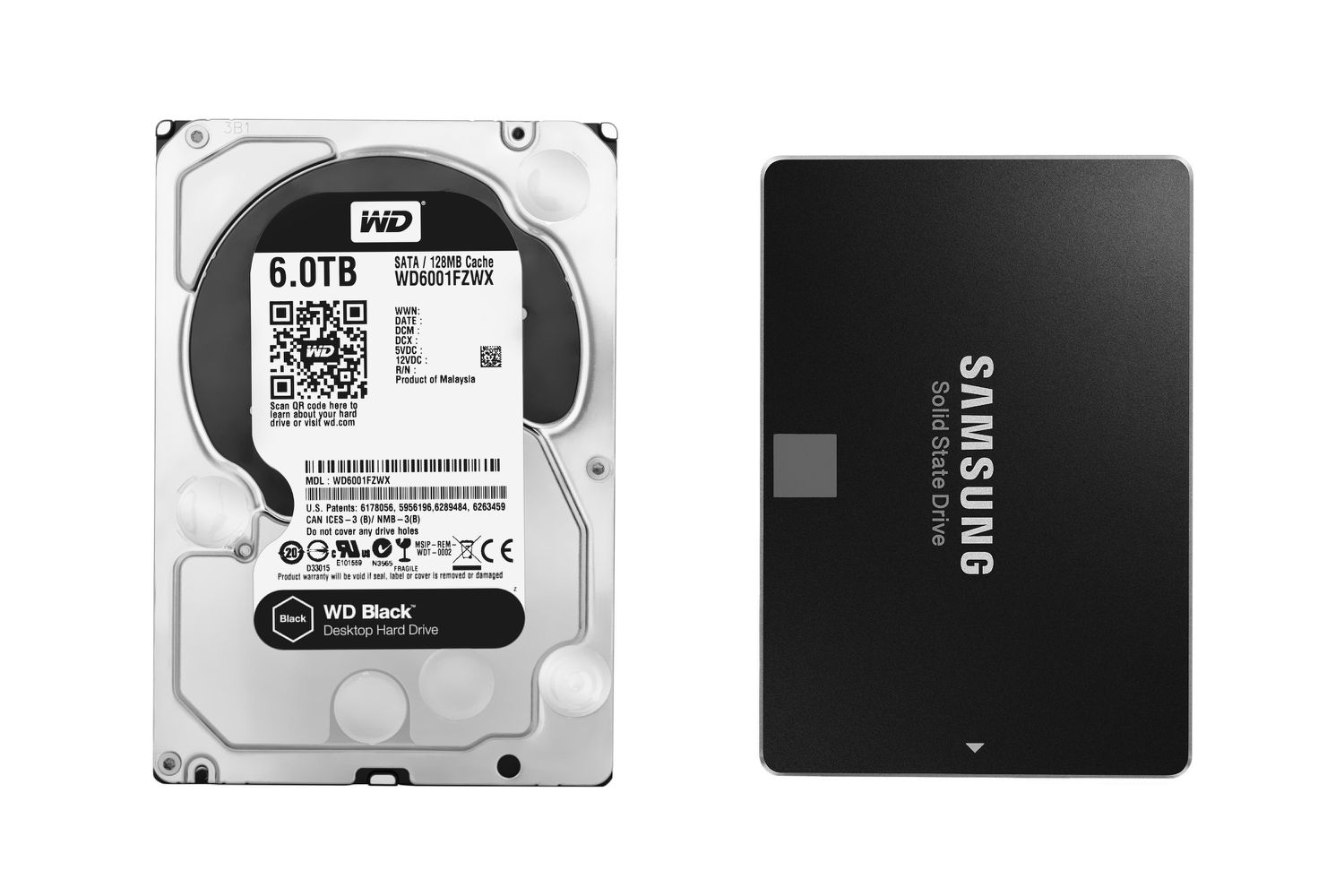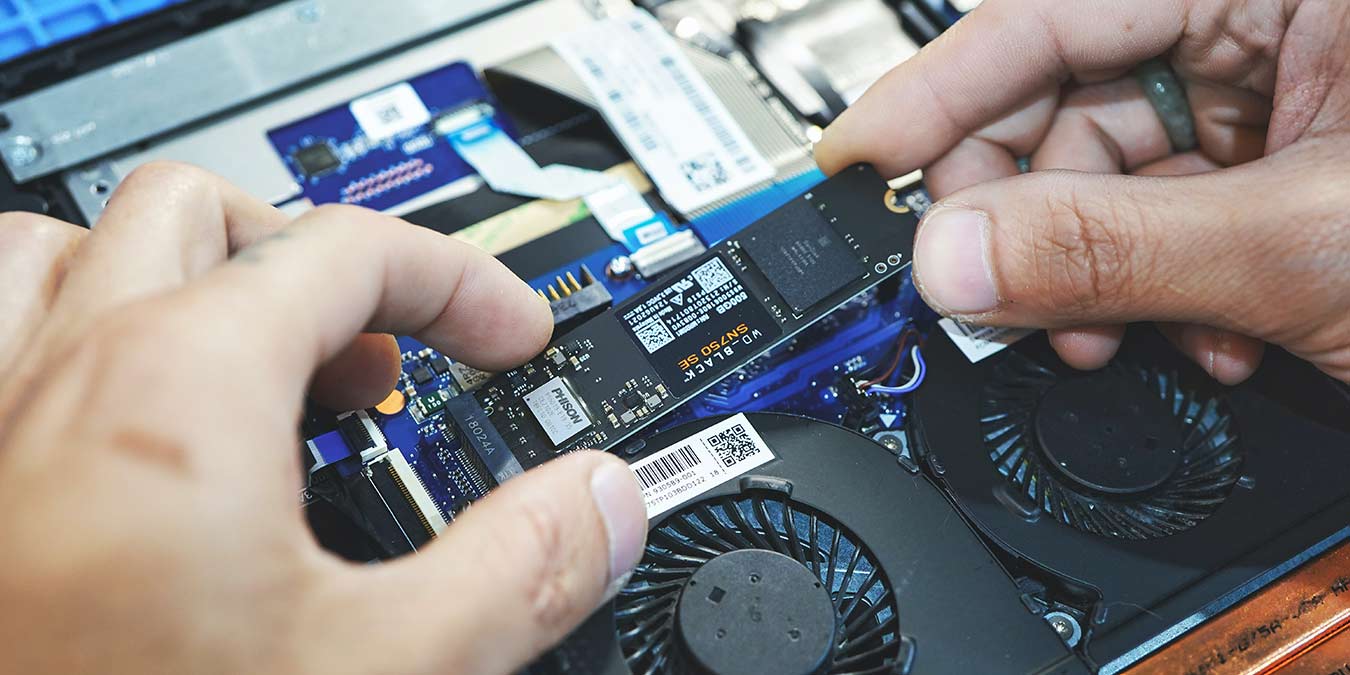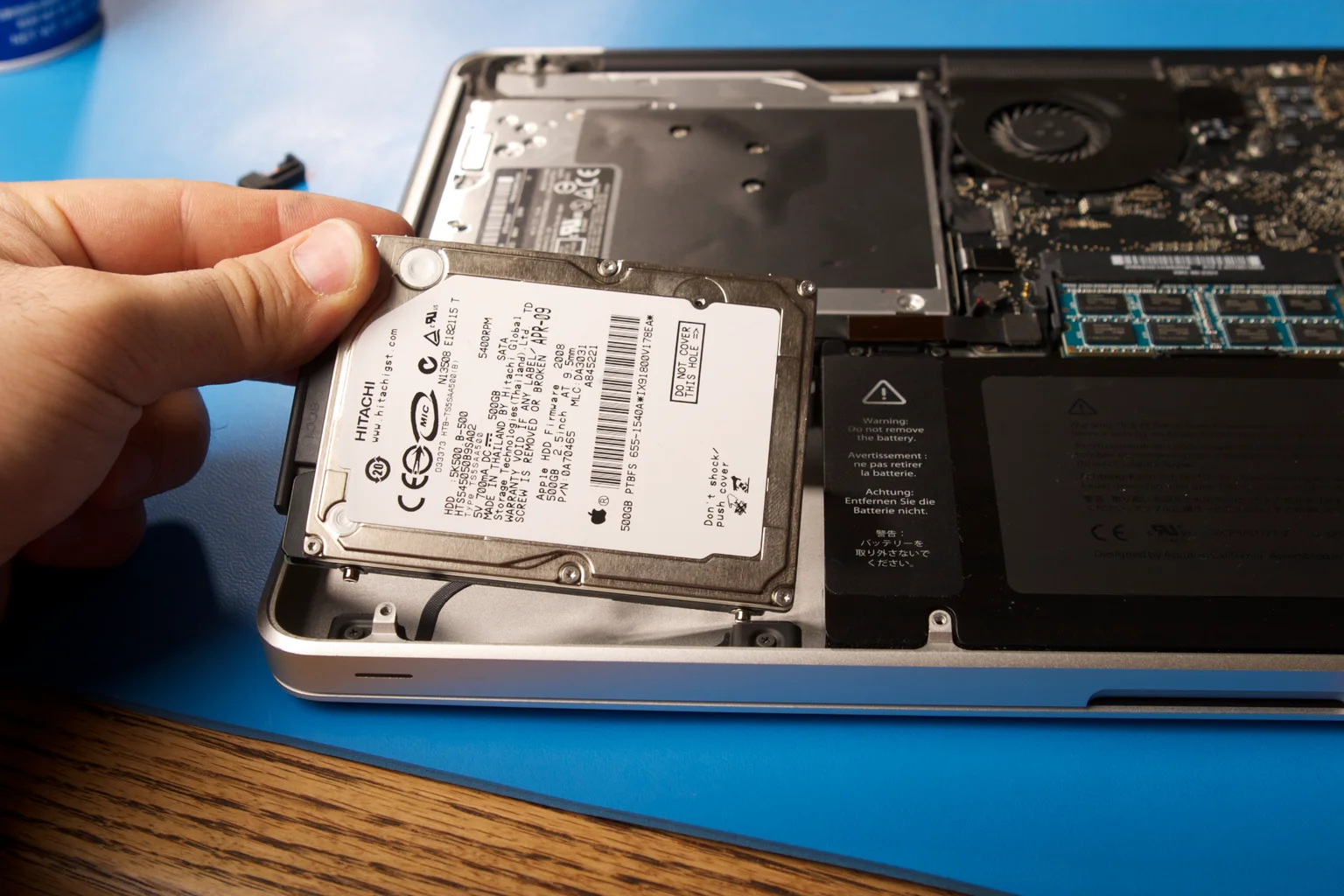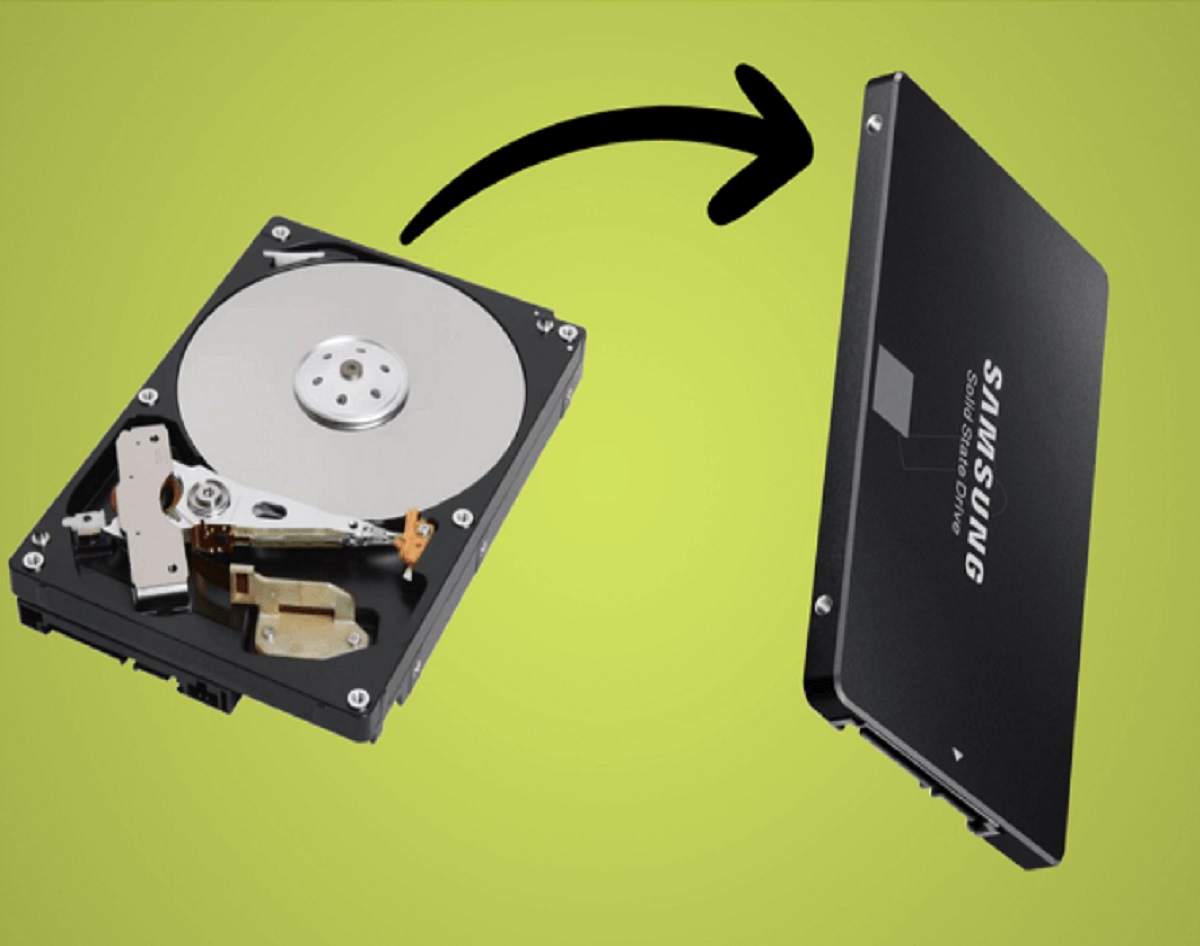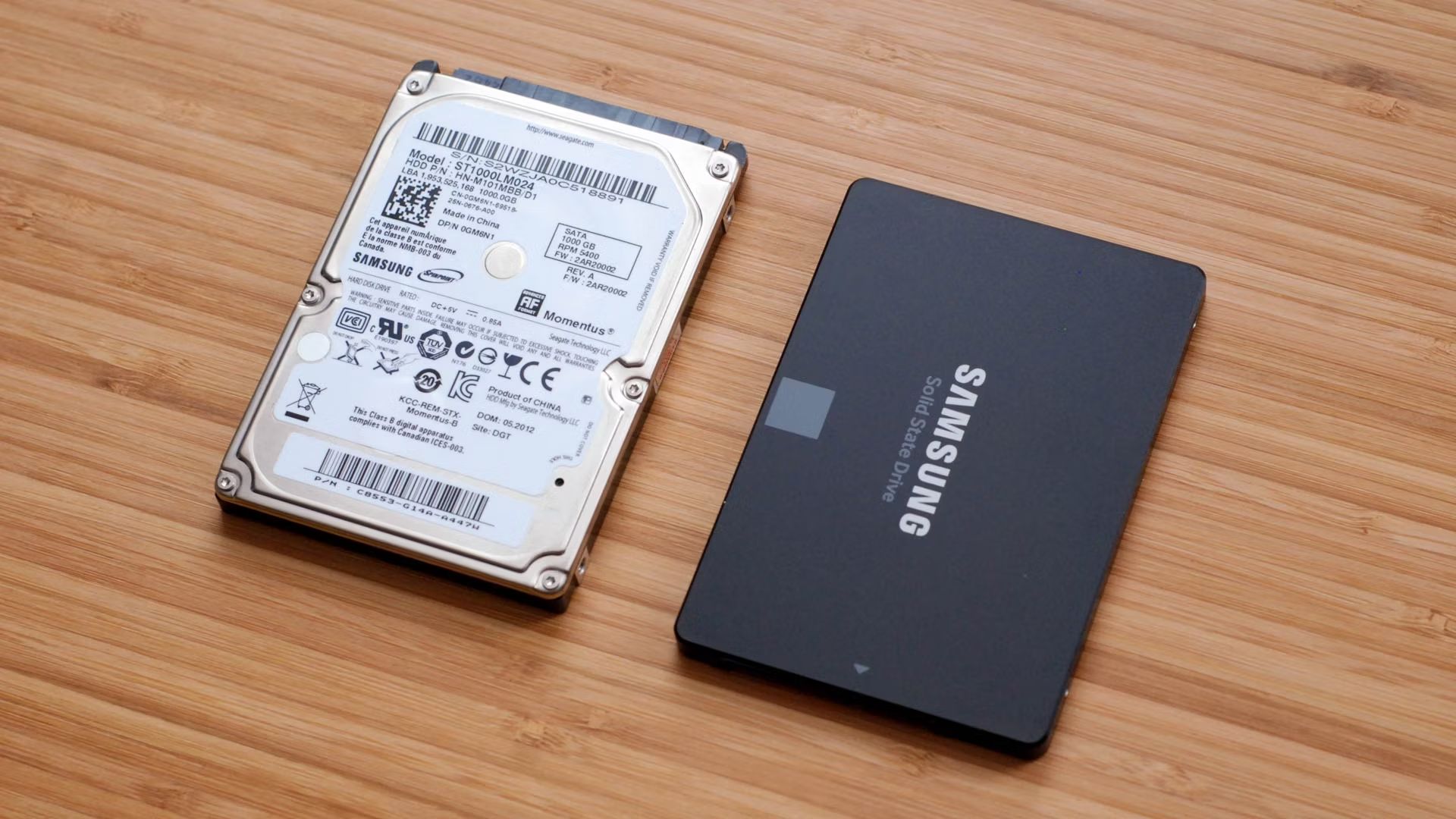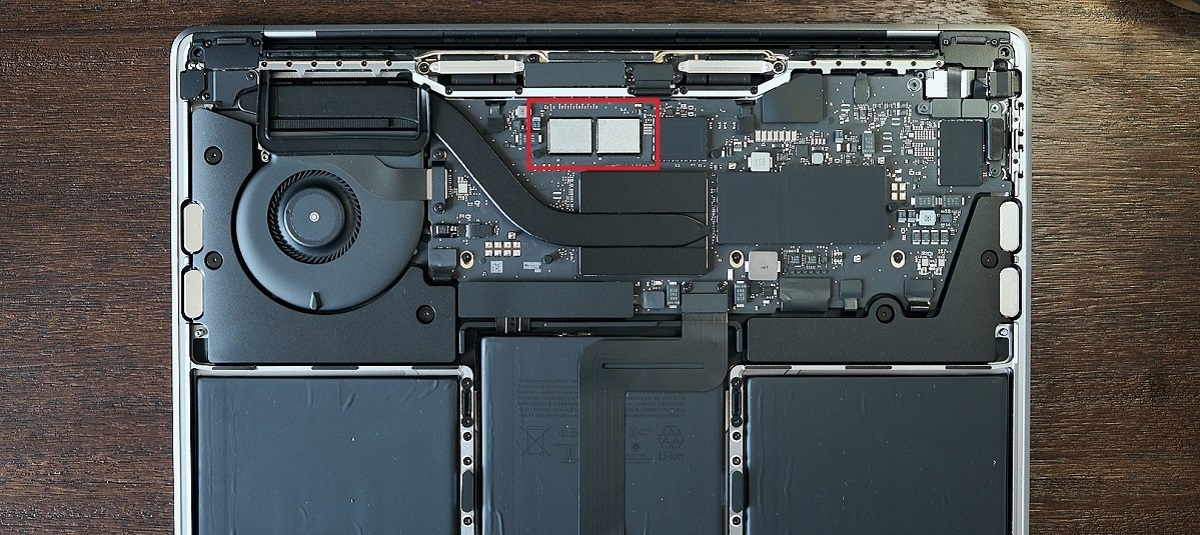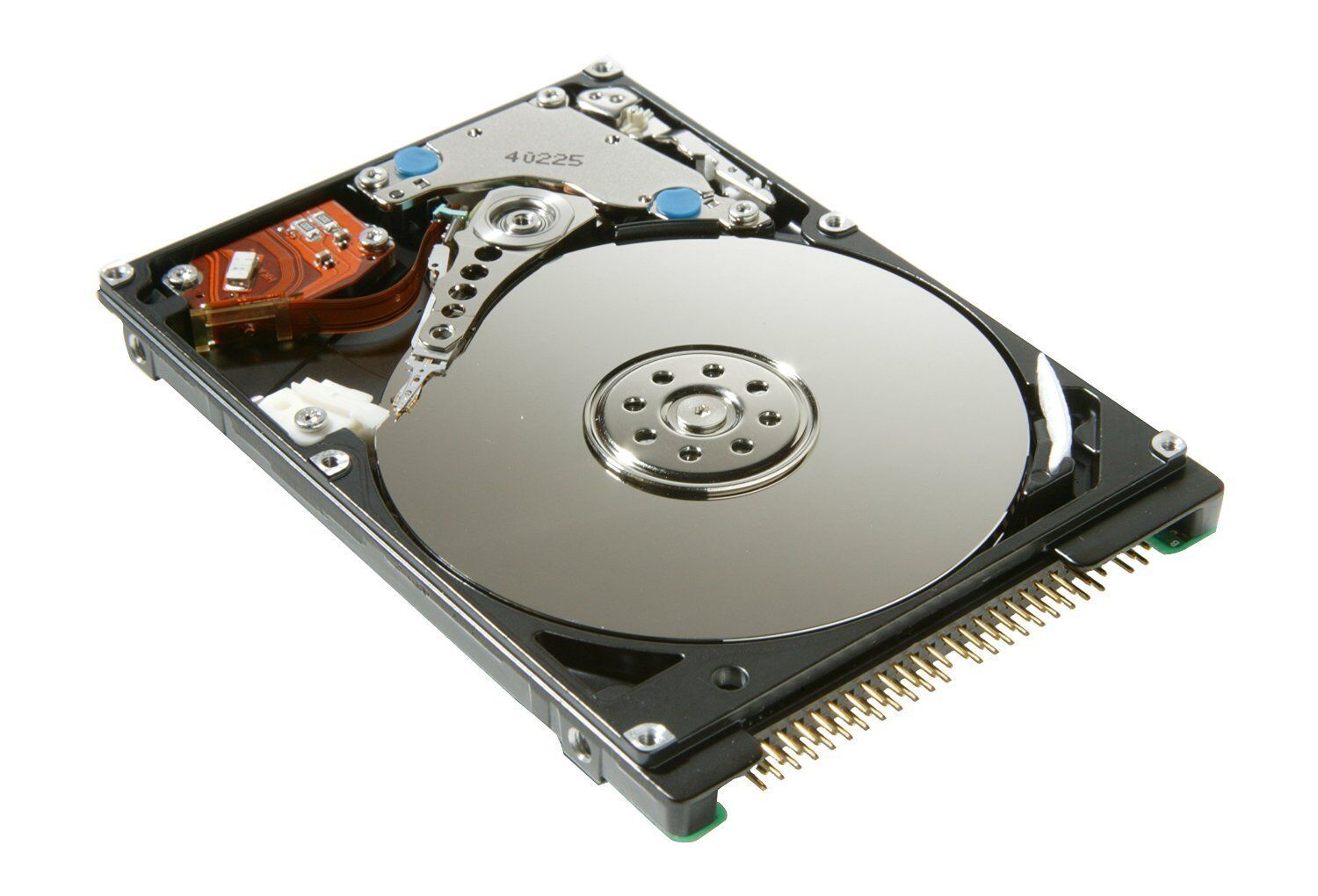Introduction
When it comes to computer storage, there are two main types of drives that you may have: Solid State Drive (SSD) and Hard Disk Drive (HDD). Knowing which type of drive you have is essential for various reasons, such as understanding its performance capabilities, potential limitations, and even compatibility with certain software.
Fortunately, determining whether your computer has an SSD or HDD is a relatively straightforward process. In this article, we will guide you through several methods to help you identify the type of drive installed in your computer.
Understanding the difference between SSDs and HDDs is crucial, as they have distinct characteristics. SSDs are faster, quieter, and more durable than HDDs. They use flash memory to store data and have no moving parts, making them resistant to physical shock and offering rapid data access. HDDs, on the other hand, utilize rotating platters and a mechanical arm to read and write data. They have larger storage capacities but are generally slower and less durable than SSDs.
Now that you have a basic understanding of the differences between SSDs and HDDs, let’s dive into the methods you can utilize to find out which type of drive your computer is equipped with. By using these methods, you will be able to gain valuable insights into your computer’s storage configuration and make informed decisions regarding upgrades or software compatibility.
Checking Your Computer’s Specifications
One of the simplest ways to determine whether your computer has an SSD or HDD is to check its specifications. By examining the technical details of your system, you can often find information about the installed storage device.
To access your computer’s specifications, you can follow these steps:
- Open the Start menu and type “System Information” in the search bar. Click on the corresponding result to open the System Information window.
- In the System Information window, you will find various details about your computer’s hardware and software. Look for the “Storage” or “Disk Drives” section.
- In the Storage section, you will see a list of all the drives present in your computer. Here, you can find the name or model number of your storage device.
- Look for keywords such as “SSD” or “Solid State Drive” to confirm that you have an SSD. If these keywords are not mentioned, you likely have an HDD.
Alternatively, you can use different terminology to identify an SSD or an HDD. SSDs may be referred to as “Flash Memory,” “Solid State,” or “NVMe” (Non-Volatile Memory Express), while HDDs may be labeled as “Hard Disk Drive” or simply “Disk Drive.”
By checking your computer’s specifications, you can easily confirm the type of storage device you have. However, if you prefer a more direct method, continue reading to explore other options.
Using Device Manager
Another method to determine the type of drive your computer has is by utilizing the Device Manager, a built-in Windows tool that allows you to manage and view the hardware devices connected to your system.
Here’s how you can use Device Manager:
- Open the Start menu and type “Device Manager” in the search bar. Click on the corresponding result to open Device Manager.
- In the Device Manager window, locate the “Disk drives” category and click on it to expand the list of storage devices.
- You will see the name or model number of the storage devices connected to your computer. Look for keywords such as “Solid State Drive” or “SSD” to identify if you have an SSD, or “Hard Disk Drive” or “HDD” to identify if you have an HDD.
If you find multiple drives listed, you can examine the model numbers or drive names to determine which drive is an SSD or HDD. Manufacturers often include specific naming conventions that indicate the type of storage device.
With Device Manager, you can quickly identify the type of drive your computer has. However, if this method doesn’t provide the necessary information, don’t worry. There are still additional methods to help you find out the type of drive you have.
Using Command Prompt
If you prefer a more technical approach, you can use the Command Prompt utility to determine the type of drive installed in your computer. Command Prompt allows you to execute commands and retrieve detailed information about your system’s hardware.
Follow these steps to use Command Prompt:
- Open the Start menu and type “Command Prompt” in the search bar. Click on the corresponding result to launch Command Prompt.
- In the Command Prompt window, type the following command and press Enter: “
wmic diskdrive get model“. - You will see a list of storage devices along with their respective model numbers.
- Scan through the list and look for keywords such as “SSD” or “Solid State Drive” to identify if you have an SSD, or “HDD” or “Hard Disk Drive” to identify if you have an HDD.
The Command Prompt method provides you with precise information about the model numbers of your drives. By examining the model numbers, you can often determine whether the device is an SSD or HDD based on the naming conventions used by manufacturers.
Remember that using Command Prompt requires some technical knowledge, and it may not be as user-friendly as other methods. If you are not comfortable using Command Prompt or need a more straightforward option, continue reading to explore more ways of identifying the type of drive in your computer.
Analyzing Storage Capacity
Another method to determine whether your computer has an SSD or HDD is by analyzing the storage capacity of the drive. While this method is not foolproof, it can give you a clue about the type of storage device installed.
Here’s how you can analyze the storage capacity:
- Open File Explorer by clicking on the folder icon on the taskbar or pressing the Windows key + E.
- In File Explorer, you will see a list of drives under “This PC” or “My Computer.”
- Look for the drive that represents your main storage device, typically labeled as “C:” or “Local Disk (C:)”.
- Right-click on the drive and select “Properties” from the context menu.
- In the Properties window, you will see information about the storage capacity of the drive in gigabytes (GB) or terabytes (TB).
In general, SSDs have smaller storage capacities compared to HDDs. SSDs typically range from 128GB to 2TB, while HDDs can have larger capacities, ranging from 500GB to 16TB or more. Keep in mind that these are general ranges, and there can be variations.
If you find that your storage capacity falls within the typical range for SSDs, it is highly likely that you have an SSD installed. Conversely, if your capacity falls within the larger range for HDDs, it is likely that you have an HDD. However, it’s important to note that there are SSDs and HDDs available with various capacities, so this method is not definitive.
While analyzing storage capacity can provide some indication, it is always recommended to combine this method with other methods discussed in this article to obtain more accurate results.
Recognizing Drive Noise and Performance
Drive noise and performance characteristics can also give you hints about the type of drive installed in your computer. While this method requires some observation and subjective analysis, it can be helpful in determining whether you have an SSD or HDD.
Here are some factors to consider when recognizing drive noise and performance:
Noise:
SSDs, being solid-state devices, are completely silent as they have no moving parts. They generate no mechanical noise during operation. On the other hand, HDDs have spinning platters and mechanical components, which can produce audible noise, such as a humming sound or occasional clicks or whirring noises.
Performance:
SSDs are known for their rapid data access and transfer speeds. If your computer boots up quickly, applications launch almost instantaneously, and file transfer operations are noticeably fast, it is likely that you have an SSD.
HDDs, while generally slower than SSDs, may take a bit longer to boot up, launch applications, or perform file transfers. They may also exhibit a slight delay when accessing data, especially for larger files.
By paying attention to the noise emitted by your drive and observing its performance characteristics, you can gain insights into whether you have an SSD or HDD. Remember that these observations should be used in conjunction with other methods to confirm the drive type accurately.
If you are still unsure about the type of drive you have, there are additional methods you can explore. Keep reading to find out more.
Looking for Drive Label or Sticker
If you have physical access to your computer or its hard drive, you can try to identify the type of drive by looking for labels or stickers on the drive itself. These labels often provide valuable information about the drive, including its model number and type.
Here’s what you can do to find the drive label or sticker:
- If you have a desktop computer, power it off and unplug the power cable. If you have a laptop, shut it down and remove the battery if possible.
- Open your computer case by removing the screws or latches on the side panel. Be careful and consult your computer’s manual if you are unsure about the process.
- Locate the storage drive inside your computer. It is usually a rectangular-shaped device connected to the motherboard.
- Check for any labels or stickers on the drive itself. These labels may contain information such as the drive’s manufacturer, model number, and type (SSD or HDD).
- If you find a label or sticker, look for keywords such as “SSD” or “Solid State Drive” to confirm that you have an SSD or “HDD” or “Hard Disk Drive” to confirm an HDD.
- If there are no labels or stickers on the drive, don’t worry. There are still a few more methods you can try to determine the type of drive in your computer.
Remember to exercise caution when opening your computer case and handling internal components. If you’re not comfortable doing so, it’s always best to seek the assistance of a professional technician.
Now, let’s explore the last method to help you identify the type of drive you have.
Seeking Professional Help
If you have tried all the methods mentioned above and are still unable to determine the type of drive in your computer, it may be time to seek professional help. Consulting a knowledgeable technician or computer specialist can provide you with accurate information about your computer’s storage device.
Here are a few ways to seek professional assistance:
- Visit a Local Computer Repair Shop: Take your computer to a reputable computer repair shop and explain that you are unsure about the type of drive in your system. The technicians there can open your computer, inspect the drive, and provide you with the necessary information.
- Contact the Manufacturer or Service Center: Reach out to your computer’s manufacturer or their authorized service center. They can help you identify the type of drive by requesting your computer’s model number or other identifying details.
- Consult Online Forums and Communities: Join online forums or communities dedicated to computer hardware and post your query. Many experienced enthusiasts and professionals can provide guidance based on your computer’s specifications or photos.
Remember, seeking professional help ensures accurate identification of your drive type, and it can also provide you with valuable insights into potential upgrades or compatibility issues.
By utilizing the expertise of professionals, you can avoid any guesswork and get definitive answers regarding the type of drive installed in your computer.
Now that you have explored various methods to identify your computer’s storage device, you can confidently determine whether you have an SSD or HDD and make informed decisions regarding upgrades or software compatibility.
Conclusion
Determining whether your computer has an SSD or HDD is crucial for understanding its performance capabilities, potential limitations, and compatibility with software. By using a combination of methods, you can confidently identify the type of drive installed in your computer.
Checking your computer’s specifications, using Device Manager, analyzing storage capacity, recognizing drive noise and performance, looking for drive labels or stickers, and seeking professional help are all effective ways to determine the type of drive you have.
Remember, SSDs offer faster speeds, quieter operation, and increased durability compared to HDDs. On the other hand, HDDs provide larger storage capacities but are generally slower and less durable.
When using the methods outlined in this article, keep in mind that they may not be foolproof and might require a combination of approaches to ensure accurate results. Consider consulting a professional if you are uncertain or require further assistance.
Understanding the type of drive in your computer allows you to make informed decisions regarding upgrades, software compatibility, and overall performance optimization. Whether you are a casual user, a professional, or a gaming enthusiast, knowing whether you have an SSD or HDD will help you maximize your computing experience.
With the knowledge gained from this article, you can confidently identify the type of drive installed in your computer, enabling you to optimize its performance and make informed decisions regarding your storage needs.









